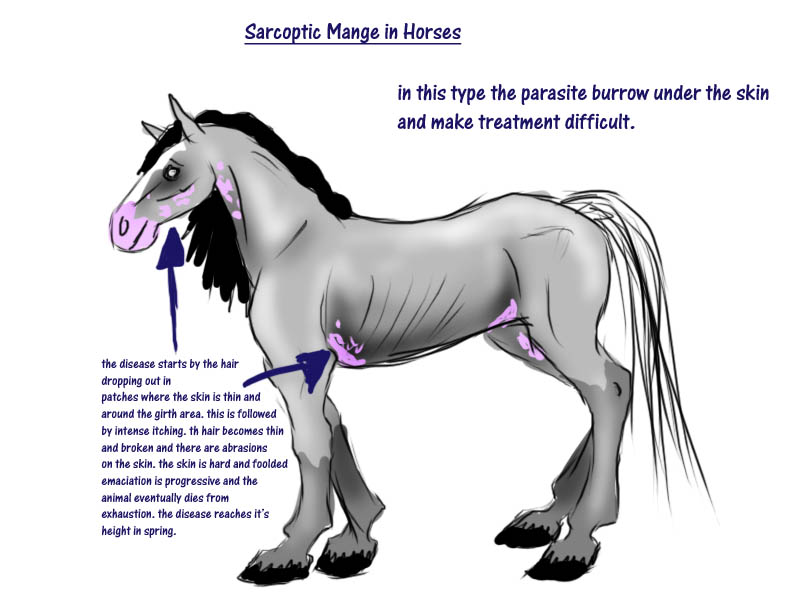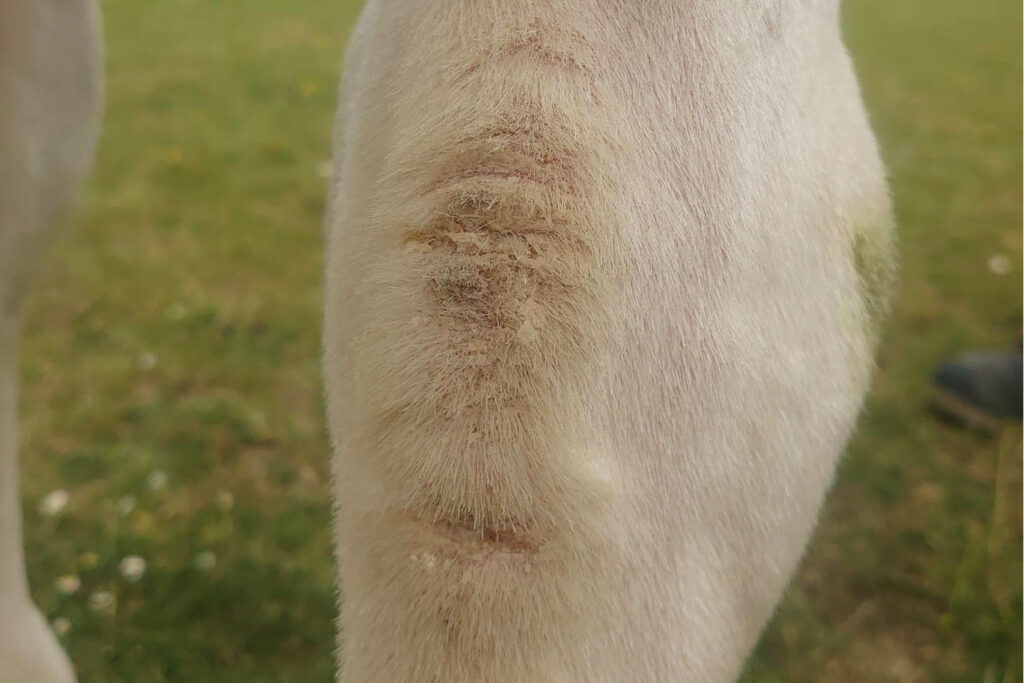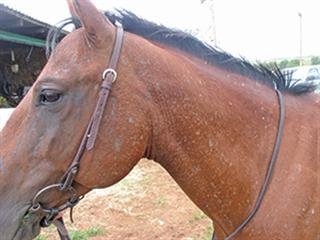Horses, majestic creatures known for their beauty and grace, are unfortunately susceptible to various skin conditions, including mange. Mange is a rare but irritating skin condition caused by different types of mites.
Clinical Signs and Symptoms
When a horse is infested with mange, there are several clinical signs to watch out for. These signs include irregular skin lesions, severe itching, and sometimes biting of affected areas. It may also lead to decreased feed consumption. The skin lesions typically start as red areas and progress to the development of papules and crust formation.
Leg mange is the most common form of mange in horses and tends to occur in heavy (draft) breeds. It usually begins with itching in the legs, particularly the hind legs, around the foot and fetlock. Raised bumps appear first, followed by hair loss, crusting, and thickening of the skin.

Credit: www.deviantart.com
Treatment Options
The good news is that there are various treatment options available to combat mange in horses. One commonly used treatment is the administration of ivermectin, which can help reduce mite numbers. However, it is important to note that ivermectin solutions as a shampoo can be messy.
In some cases, horses may require additional treatments based on the type of mange they have. For example, chorioptic mange is caused by infestation with Chorioptes bovis and is the most common form found in horses. Specific treatments may be needed to target this particular type of mange.
Prevention is crucial when it comes to managing mange in horses. Regular grooming and maintaining a clean living environment can significantly reduce the risk of infestation. Additionally, maintaining a horse’s overall health and providing a balanced diet can strengthen their immune system and help prevent mange from occurring.

Credit: www.worldhorsewelfare.org
Frequently Asked Questions For Mange In Horses
What Are The First Signs Of Mange In Horses?
The first signs of mange in horses include irregular skin lesions, severe itching, biting of affected skin areas, and decrease in feed consumption. The skin lesions start as erythematous area, followed by the development of papules and crust formation. It is important to closely monitor horses for these symptoms to detect mange early and provide prompt treatment.
Can You Catch Mange From A Horse?
Humans can’t catch mange from horses, as the mites causing scabies are different. Close contact is required for transmission.
Does Ivermectin Treat Mites In Horses?
Yes, ivermectin can help reduce mite numbers in horses, but it might not eliminate the mites completely. Using ivermectin solutions as a shampoo can be beneficial, but it doesn’t always reach the skin in high enough levels to eliminate the mites.
Does Ivermectin Cure Mange?
Ivermectin is used to treat mites in horses, including different forms of mange such as chorioptic mange. It can also be used to treat ear mites and cat scabies in cats. Ivermectin may help in reducing mite numbers, but it may not completely eliminate the mites.
Conclusion
Mange in horses is a bothersome condition that can cause discomfort and distress. Being aware of the clinical signs and symptoms is crucial for early detection and timely treatment. By implementing preventive measures and utilizing appropriate treatment options, horse owners can effectively manage and control mange, ensuring the well-being of their equine companions.

